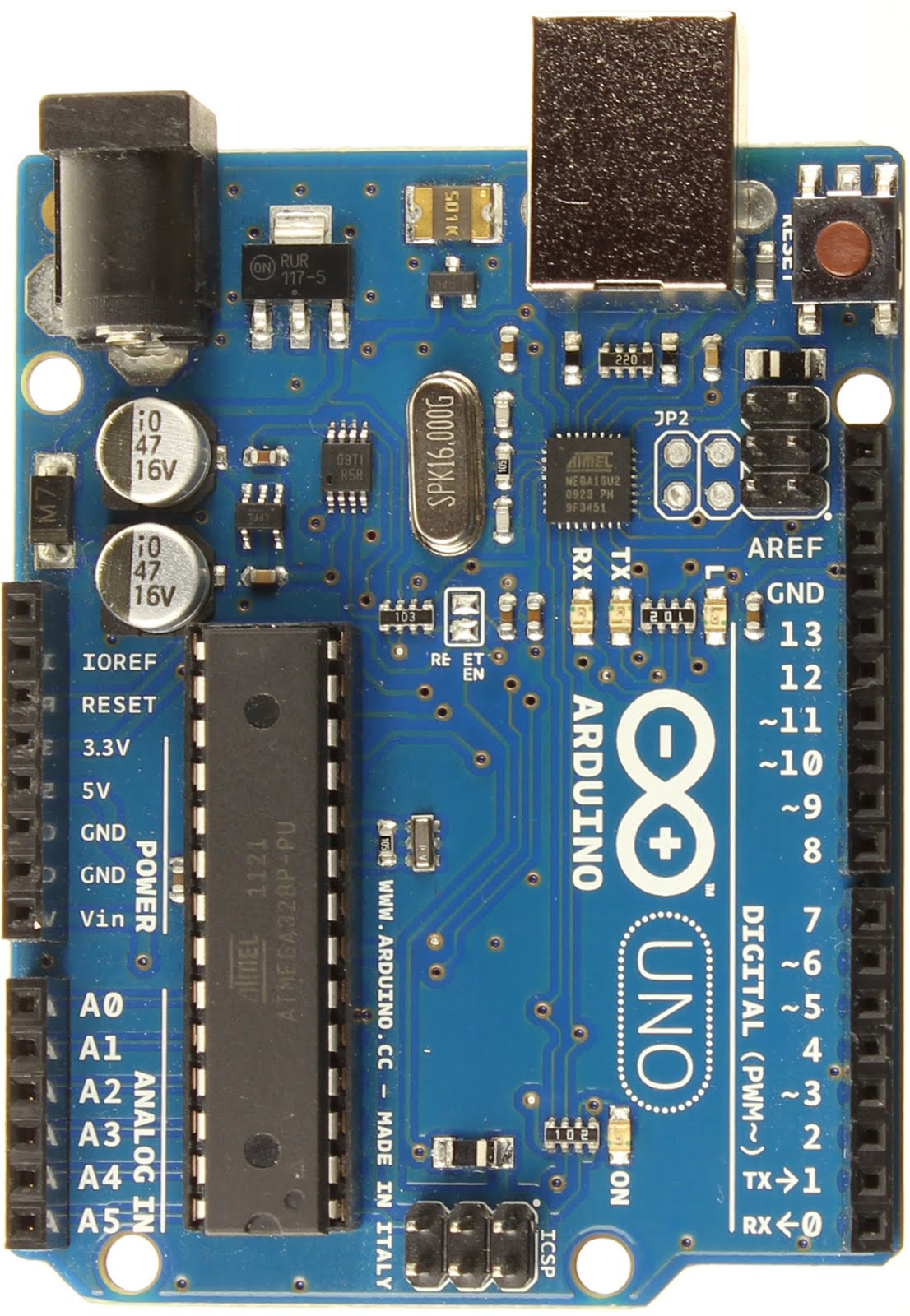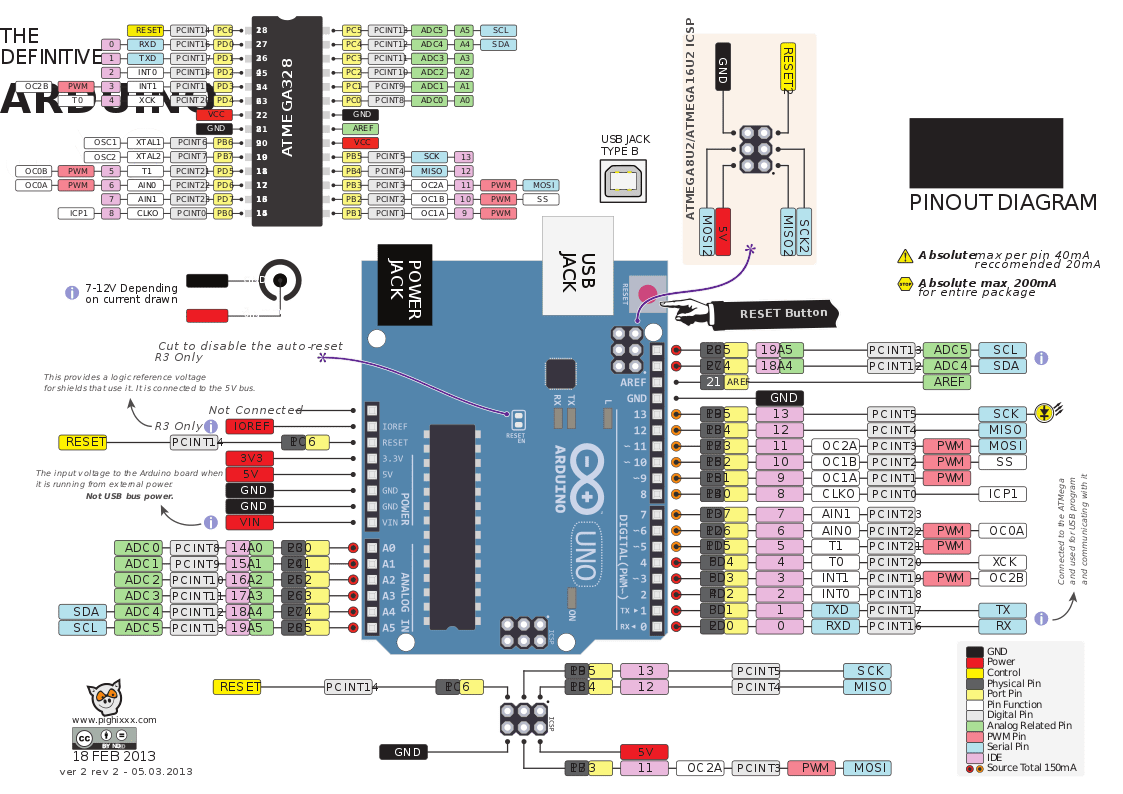

- #Arduino uno board schematic serial
- #Arduino uno board schematic software
- #Arduino uno board schematic code
- #Arduino uno board schematic series
- #Arduino uno board schematic zip

#Arduino uno board schematic series
Using a potentiometer, you can control a series of LEDs in a row.
#Arduino uno board schematic code

Once complete, the LED should turn on for a second and then off for a second in a loop. This project is identical to project #1 except that we will be building it on a breadboard.

Click upload button to send sketch to the Arduino.
#Arduino uno board schematic serial
Select the board and serial port as outlined in earlier section.Open project code – Circuit_01_TestArduino.Connect the Arduino board to your computer using the USB cable.Push the resistor leg that’s connected to the LED into the #13 pin.Push the short leg of the LED into the ground (GND) pin on the board.Twist a 220 Ω resistor to the long leg (+) of the LED.This project will test your Arduino by blinking an LED that is connected directly to the board. The first project is one of the most basic and simple circuits you can create with Arduino. Once the file has been downloaded, you will need to unzip/extract the folder in order to use it.
#Arduino uno board schematic zip
Use the link below to download the zip folder containing the code. For some of these projects, we are using open-source code that was released by the good people at Sparkfunand Arduino. A sketch is simply a set of instructions that tells the board what functions it needs to perform. To complete the projects in this tutorial, you will need to download the project code which are known as sketches. To select the port, go to Tools > Port and then select the port that says Arduino. Next, you have to tell the Arduino which port you are using on your computer. Once the board is plugged in, you will need to open the IDE and click on Tools > Board > Arduino Uno to select the board. To do this, plug one end of the USB cable to the Arduino Uno and then the other end of the USB to your computer’s USB port. Once the IDE is installed, you will need to connect your Arduino to your computer. You can download the IDE for free on Arduino’s website. This program allows you to write, view and upload the code to your Arduino Uno board.
#Arduino uno board schematic software
Getting Startedīefore you can start working with Arduino, you need to make sure you have the IDE software installed on your computer. If you need some background on the Arduino Uno board or the tools that are needed, please check out post – Arduino Uno For Beginners. This tutorial is going to allow you to jump right in and start building circuits. In this tutorial, you will be creating circuits using the following electronic components: These simple projects will teach you the basics of Arduino Uno, electronics and programming. The easiest way for beginners to get started with Arduino is by creating circuits using a solderless breadboard. Whether you’re a beginner or an experienced user, having an Arduino Uno Schematic at your disposal can be invaluable.FREE EBOOK (PDF) – Ultimate Beginners Guide To Arduino Additionally, an Arduino Uno Schematic can be used to demonstrate the versatility of the board and to teach others about the basics of electronics and programming. This makes it easier to troubleshoot any issues that may arise, as well as to plan out the layout of the project before beginning. Additionally, the board contains multiple ports for connecting external components, such as motors and LEDs, as well as the necessary resistors and capacitors which help the board to regulate and direct the power.Īn Arduino Uno Schematic also provides a visual representation of how the components are connected on the board. This is what gives the board its computing power, allowing it to read and interpret data from sensors and other devices. The most basic component is the microcontroller. It is essential for anyone interested in building or tinkering with these types of projects.Īrduino Uno Schematic comprises of several components, each with their own functionality. An Arduino Uno Schematic is the blueprint of the board that is used to control a variety of projects, including robotics, 3D printing, and home automation. The Arduino Uno is an important piece of technology for hobbyists and professionals alike.


 0 kommentar(er)
0 kommentar(er)
